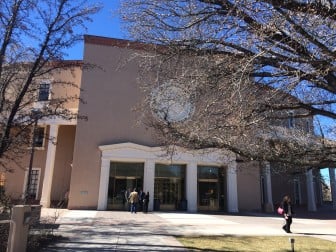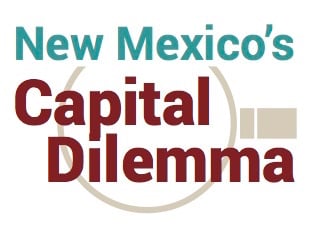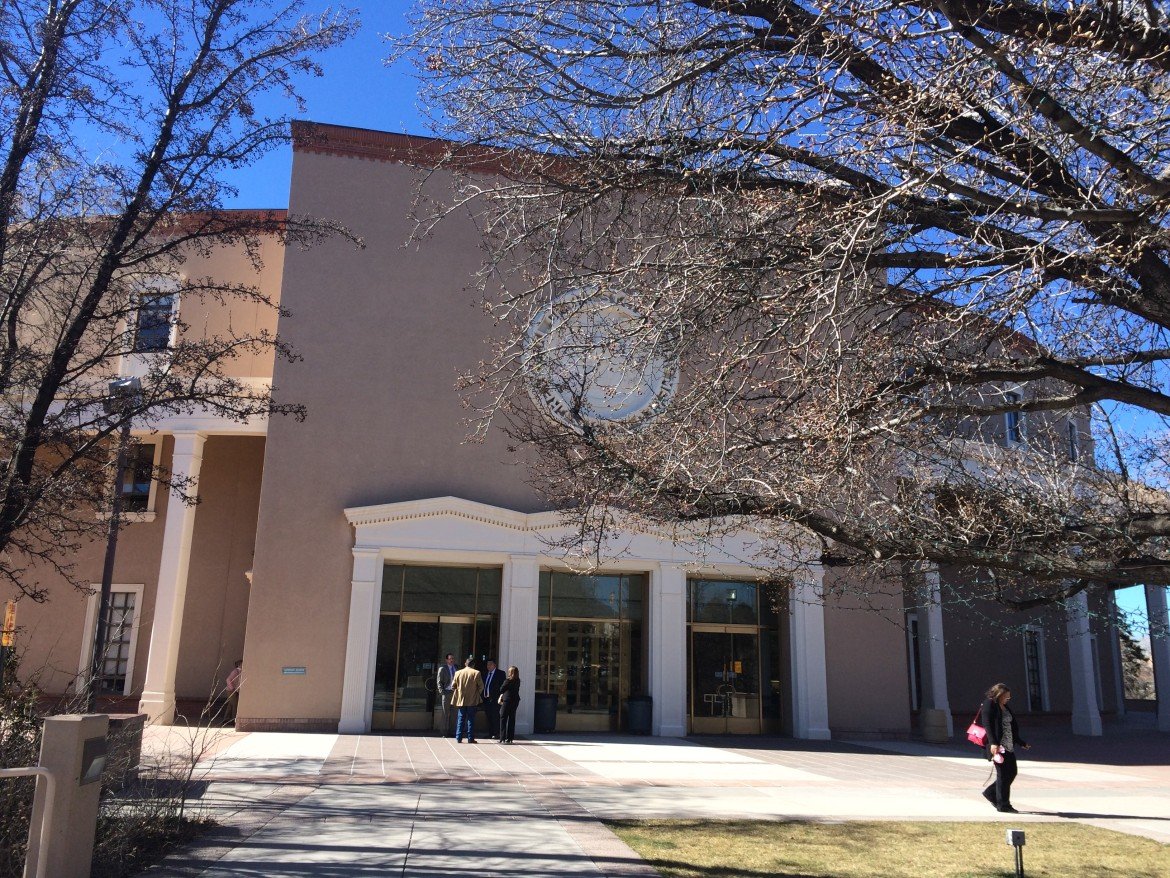 Efforts to reform the capital outlay system have yet to make much progress halfway through the 2016 legislative session.
Efforts to reform the capital outlay system have yet to make much progress halfway through the 2016 legislative session.
Gov. Susana Martinez called for reforming how New Mexico allocates money for infrastructure projects in her state of the state address. Yet only one bill has had a committee hearing.
And at least $1 billion sits unspent for hundreds of projects around the state, a reminder for state lawmakers of the current system’s weaknesses. A quarter of that unspent money is tied up in local projects designated by individual lawmakers.
Late Tuesday, a day before the deadline to file new legislation, a capital outlay reform bill was introduced. But its path to success faces significant challenges, two legislative sponsors say.
House Bill 307, sponsored by Rep. Zachary Cook, R-Ruidoso, and Sen. Carlos Cisneros, D-Questa, is supported by Think New Mexico, a nonpartisan Santa Fe think tank.
The bill received a message from Martinez just before noon Wednesday, encouraging the House to take it up. It was referred to the House Government, Elections and Indian Affairs Committee, as well as the Ways and Means Committee.
It would create an appointed commission to prioritize projects and unlock money when they’re ready for construction, similar to how New Mexico pays for school projects.
“We’ve been working behind the scenes to build a consensus around these reforms before the bill was introduced,” Fred Nathan, executive director of Think New Mexico, said in an email. A news release from the group said Rio Rancho Republican Rep. Jason Harper, chairman of the House Ways and Means Committee, also signed on to support the bill.

Cisneros and Cook, however, said it won’t be easy to persuade a majority of their colleagues in the House of Representatives and the Senate to support reform in the next 15 days. The session ends Feb. 18 at noon.
“Where it becomes problematic with the Legislature is, we go in there and try to dictate to individual members that they cannot fund a specific project in their respective districts, which is political, needless to say,” Cisneros said.
New Mexico is the only state in the nation allowing legislators to directly fund projects, a process often referred to as “pork barrel politics.”
House Bill 307 would remove state lawmakers from having sole authority to pay for projects. It’s a process that some say has contributed to hundreds of projects around the state sitting incomplete, either because they weren’t requested by communities, weren’t fully funded or weren’t ready for construction when state dollars were allocated.
The bill doesn’t have “a real good chance” given how late it is in the session, Cook said. “I agreed to introduce it because it’s well worth the conversation we can get out of it the next two weeks.”
It’s not difficult to spy examples of the resistance House bill 307 might face over the next 15 days.
On Monday, several senators criticized efforts to reform the system during a hearing on a separate bill sponsored by Republican Sen. Sander Rue of Albuquerque that would require publication of what individual legislators allocate for specific projects each year. Currently, that information is secret unless the lawmaker gives permission to the Legislative Council Service to share their allocations.
“I’m glad that we’re having this conversation. Think New Mexico has a reform of the capital outlay process bouncing around out there,” said Sen. Daniel Ivey-Soto, D-Albuquerque, at Monday’s hearing. “I’m grateful for the work they’ve done but I think they need to go back and think some more.
“I’m frustrated with the capital outlay system,” Ivey-Soto added. “I’m not sure what that solution is, but I think it’s a solution that needs to come internally from the Legislature.”
The Senate Rules Committee approved Rue’s bill with one “no” vote, but not before changing when it would go into effect — 2017 — after lawmakers raised concerns about the projects becoming public this year, which is an election year.
Meanwhile, a separate bill sponsored by Cisneros hasn’t received a single legislative hearing after a powerful Senate committee ruled it didn’t fit with the 30-day session’s narrow agenda.
Cisneros said Tuesday he hopes the governor, who sets the agenda for the 30-day legislative session, will send a message saying the legislation should be heard.
The economics
The battle over capital outlay reform during the 30-day legislative session coincides with a dramatic decrease in what New Mexico can afford to pay for projects. Plummeting prices for oil and gas, industries that produce significant tax revenues for New Mexico, mean less money to go around.
The news couldn’t come at a worse time for a state with the highest unemployment rate in the nation and a significant loss of construction jobs. Government-funded infrastructure projects can be an economic shot in the arm, said Scott Verhines, a consulting civil engineer who served as state engineer for three years.
“There are very few things you can do that provide the economic benefit (like) going out and building things,” Verhines said. “They’re big job creators.”
Lawmakers heard last week that only $123 million will likely be available for severance tax bonds, the money that funds both state and local projects — often referred to in shorthand as “capital outlay.”
By comparison, last year there was $212 million in severance tax bonds, with supplemental money that boosted the total amount of money earmarked for projects to $297 million. A dispute over how to spend the money resulted in a meltdown at the end of the 2015 session, requiring a special June session to pass the bill.
This year’s amount is not nearly as low as during the recession, when only $41.8 million in severance tax bonds were approved in 2010.
Unspent money
Virhines, who is president of Occam Consulting Engineers, said New Mexico’s current system of earmarking projects contributes to the large amounts of unspent money.
“The way we do it now is we give everybody a little bit of money and nobody has enough to complete projects in a reasonable amount of time,” Verhines said.
In a briefing Jan. 25, legislative staff mentioned a flood damage improvement project for Lincoln and Otero counties that remains on the books despite $4.5 million originally appropriated in 2008 and renewed in 2013 and 2014.
Asked about the project, Karen Takai, a spokeswoman for the state Department of Homeland Security replied in an email: “These funds were special appropriations providing state match on disaster recovery projects, that are still pending final agreement, with the Federal Emergency Management Agency (FEMA).”
Legislative analysts also noted that $70 million of the $83.4 million for water projects in the 2014 capital outlay bill had yet to be spent.
Then there’s the $236 million unspent on 1,757 local projects designated by individual lawmakers.
With so many earmarked projects, many require additional money before they can be completed, Virhines said.
How can the state see projects through to completion, he asked.
“You do two things,” Virhines said. “You prioritize projects and then you go build that entire project.”
Trip Jennings contributed reporting to this article.
